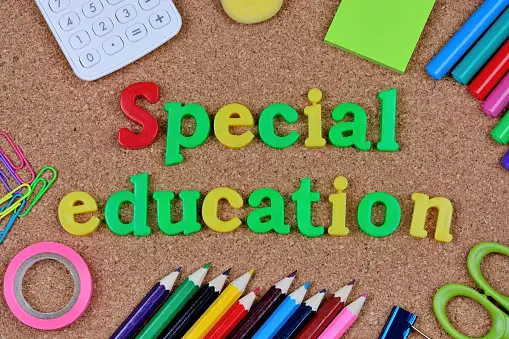The Effectiveness of Learning by Memorization: Insights from NYT
The Effectiveness of Learning by Memorization: Insights from NYT

Introduction
Memorization, also known as rote learning, remains a popular method of instruction in an age of inventive teaching techniques. This tried-and-true method has endured and is still a mainstay of many educational institutions. The article analyzes the positive and negative aspects of memory learning, relying on data from the New York Times (NYT) to assess how it can be utilized in modern learning environments.
The Historical Significance of Memory
Memorization is a centuries-old method that is essential to the maintenance of information and oral traditions. Memory was vital to all things, from the sacred scriptures of many faiths to the poetic works of ancient Greece. A great deal of information was part of pupils in times past since this showed their capacity for thought. Even though its design may have evolved, its essence remains intact, underscoring its enduring importance. Today, memorization is not just about retaining facts; it’s about building a mental repository that can be drawn upon for higher-order thinking and problem-solving.
Advantages of Memorization in Learning
1) Building a Solid Foundation:
Advanced learning depends on the foundation that memorization offers. Learning basic information, such as multiplication tables, by memory expedites the process of resolving challenging issues. It lays the foundations for the building of increasingly complex systems of knowledge. For example, in mathematics, having the ability to quickly recall multiplication tables frees students from needing trouble with simple calculations while moving on to more complicated problems. All subjects, including linguistics, where terminology must be acquired by heart, and science, where basic ideas and nomenclature must be kept, rely on this rock knowledge.
2) Increasing cognitive abilities:
Memorization activities make the brain work more effectively, improving memory and cognitive abilities. It enhances one’s ability for memory and mental agility. Studies indicate that reciting stimulates different brains, creating and reinforcing neural pathways that are essential for cognitive health. This practice not only improves memory but also enhances other cognitive skills like attention, pattern recognition, and critical thinking. Regular memorization exercises can thus be a powerful tool in maintaining and improving overall brain health.
3) Fostering discipline and concentration:
Memorization takes an enormous amount of discipline and attention. It aids in the formation of lifetime beneficial study habits and focus abilities in students. Being able to have extreme focus is extremely essential in a world where there are a lot of distractions. Repeated and laser-like attention is essential for memorization, which teaches pupils efficient time and effort control. These skills are useful not only in school settings but also in both private and professional contexts where success requires focus and discipline.
Criticisms and Limitations
Memory has been criticized for promoting shallow learning, even if it offers numerous advantages. Critics contend that it inhibits imagination and critical thinking as it makes recall precedence over knowledge. In addition, it may not be suitable for each pupil’s educational style, which might decrease its efficacy. The main worry is that reciting could result in rote learning, in which students recall facts by memory but fail to understand their significance or context. Furthermore, because kids may fail to critically think about what they are reciting, an excessive focus on memory could impede creativity and the growth of problem-solving skills.
Insights from the New York Times
The NYT looked at how to bring together memory and comprehension in the classroom. A significant paper highlighted the importance of a mixed-learning strategy that includes interactive as well as rote learning methods. With this approach, pupils are certain that they will understand and apply what they learned, as opposed to simply remembering it. For example, knowing historical dates by memory is vital, but it should be combined with activities that investigate the causes and effects of historical events. With the assistance of these blended learning tactics, students may think more deeply and recall crucial details. Similar to the NYT, reciting may be a successful strategy that adds to understanding rather than takes away from it if it is used properly.
Case Studies and Research Findings
The NYT provided research that shows the importance of recalling in an array of fields. For instance, studies on learning a language show that memorizing word lists increases fluency. Comparably, learning anatomy terms by heart is crucial for future physicians. Based on research that was reported by the Wall Street Journal, students who regularly performed memory exercises outperformed pupils who only used context-based learning in language proficiency exams. Students who committed anatomy terms to memory demonstrated superior recall and application of such information in clinical settings, based on different research in the realm of medical education. These results indicate that reciting can dramatically improve learning outcomes in an array of fields when used properly.
Modern Applications of Memorization
1) Hybrid learning models:
A complete understanding can be gained through integrating critical thinking duties with storage. In this case, after memorizing historical dates from heart, students could speak about the way these events impacted civilization as an entire. This hybrid method renders education deeper by fusing the benefits of critical thinking with the strengths of storage. Students can get a greater understanding and memory retention by exploring the intricate details and implications of what they have recalled via discussions, debates, and projects.
2)Leveraging Technology:
Digital innovations may add interaction and interest to memorizing. Fun addresses that promote learning include gamified platforms, instructional applications, and flashcards. Innovative improvements over traditional recalling methods make the process more pleasurable and effective. For instance, pupils may make and share flashcards using gamified apps like Quizlet. Platforms like Duolingo use game-like elements to encourage vocabulary memorization. These tools not only make learning more interactive but also provide instant feedback, helping students track their progress and identify areas for improvement.
3) Personalized Learning:
Techniques for reciting can be made easier by adapting them to each learner’s learning style. Diverse learners can be addressed through tactile activity, auditory repetition, and visual support. Personalized learning acknowledges that every student has distinct techniques for absorbing and retaining information. Color-coded notes and mind maps represent two methods that can improve recall for visual learners. Kinesthetic learners can utilize tangible things or hands-on exercises to assist students in remembering data, while auditory learners might profit from using mnemonic devices or listening to lectures that have been recorded. Teachers may maximize each student’s learning experience by tailoring recalling techniques to their interests.
Conclusion
Learning by memorization, as highlighted by the NYT, continues to be a valuable educational technique when used thoughtfully. It should be part of a balanced educational strategy, complementing other learning methods. By blending memorization with critical thinking and practical application, educators can create a dynamic and effective learning experience. In an educational landscape that increasingly values understanding and application, memorization still holds its ground as a fundamental skill. When integrated with modern teaching methods, it can enhance comprehension, foster cognitive development, and prepare students for a wide range of academic and real-world challenges.
